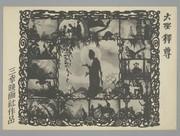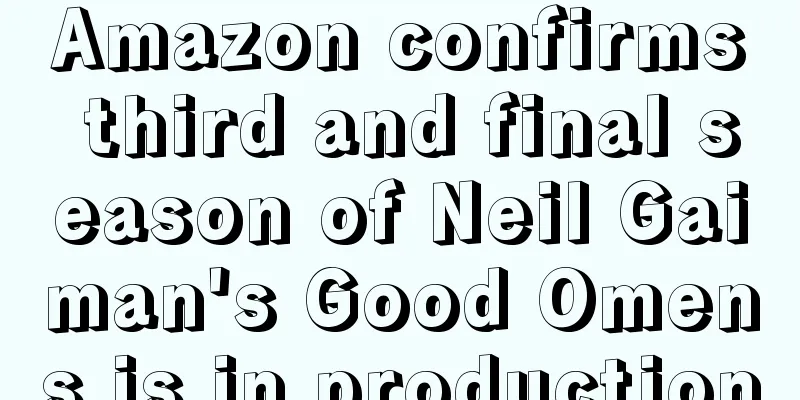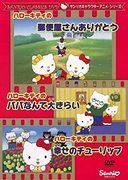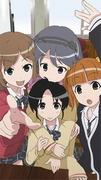Deep emotion and evaluation of "The Great Sage Shakyamuni (Part 2)": A thorough analysis of the appeal of the second part

The Profound World of "The Great Sage Shakyamuni (Part 2)": Unraveling an Unfinished MasterpieceReleased in 1952, "Daisho Shakyamuni (Part 2)" is a noteworthy work in the world of postwar Japanese animation, and I would like to delve deeper into its background, production process, and the appeal of the story that was left unfinished. This work is not just an animated film, but a magnificent story depicting the teachings of Buddhism and the life of Shakyamuni, and can be said to be a pioneering work that attempted to combine visual art and spirituality. Overview of the work"Daisho Shakyamuni (Part 2)" is an animated film released in theaters in 1952, based on an original story. The four-part film was produced by Sanko Eigasha, with drawings and direction by Ofuji Nobuo. Released in 1952, it reflects the social situation in Japan as it transitioned from the postwar period of chaos to the period of reconstruction. Background of the production and the reason for its incompleteness"Daisho Shakyamuni (Part 2)" was produced as a sequel to "Daisho Shakyamuni (Part 1)" which was released in 1948. However, the production of the second part was extremely difficult, and it was left unfinished even when it was released in 1952. The reasons for this include Noburo Ofuji's health problems, lack of funds, and the technical limitations of the time. In particular, Noburo Ofuji passed away in 1956, and although Sanko Studio took over the production of the unfinished parts after that, they were unable to complete it in its entirety. After Ofuji Noburo died in July 1956, Sanko Studio took over the unfinished work "Daisho Shakyamuni (Part 2)" and attempted to produce the unfinished portion. However, it was not possible to complete it in its entirety, so the first and second parts were compiled into 10 volumes, and a compilation was renamed "The Life of Shaka" and screened at the "Memorial Service for Ofuji Noburo" held at Yamaha Hall in Ginza, Tokyo on November 17, 1956. This screening was an important opportunity to honor Ofuji Noburo's achievements and to pass on his unfinished work to future generations. The appeal and theme of the story"The Great Sage Shakyamuni (Part 2)" is an epic tale of the life of Shakyamuni Buddha, and a visual expression of Buddhist teachings and philosophy. The story follows Shakyamuni Buddha's enlightenment, his preaching, and his journey to save all living beings. The second part in particular contains many scenes of Shakyamuni Buddha's sermons and training, making it a work of both visual beauty and spiritual depth. The theme of this work is the pursuit of liberation from suffering and enlightenment, providing an opportunity to reexamine the meaning and purpose of human life. In particular, the scene in which Buddha preaches combines beautiful animation with profound words, leaving a strong impression on the audience both visually and aurally. In addition, the scenes of Buddha's training and travels depict the beauty and harshness of nature, making viewers think deeply about the relationship between humans and nature. Features of the artwork and directionThe animation and direction of "Daisho Shakyamuni (Part 2)" strongly reflect the unique style of Noburo Ofuji. Noburo Ofuji was a master of prewar Japanese animation, highly regarded for his animation techniques and directing skills. In particular, this work incorporates traditional Japanese painting techniques while maximizing the expressive power unique to animation. The artwork is characterized by its rich colors and delicate line drawings. In particular, the scenes in which Buddha preaches use beautiful colors such as gold and blue, creating a sacred atmosphere. The delicacy of the line drawings also realistically depicts the facial expressions and movements of the characters, encouraging strong emotional empathy in the audience. In terms of direction, the camerawork and music are used skillfully, maximizing the visual effect in line with the development of the story. Evaluation and impactAlthough "Daisho Shakyamuni (Part 2)" was left unfinished, it was highly praised for its artistry and spirituality. In particular, it attracted attention in the postwar Japanese animation world as a work that depicted Buddhist teachings and philosophy, and moved many audiences. This work also had a major influence on later Japanese animation works, and is considered a pioneering work that attempted to combine visual art and spirituality. Specifically, the influence of "Daisho Shakyamuni (Part 2)" is said to be a major factor in the increase in Japanese animation works with Buddhist and philosophical themes since the 1960s. The drawing techniques and directing methods of this work also had a major impact on later animation creators, contributing to the improvement of visual expression. Recommendations and points of appreciationAlthough "Daisho Shakyamuni (Part 2)" was left unfinished, its artistic and spiritual value remains undiminished to this day. I highly recommend it to anyone interested in Buddhism or philosophy, or who wants to pursue the beauty of visual art. This work is also important in understanding the history of postwar Japanese animation, and provides clues to understanding the social situation and cultural background of the time. When viewing the film, first pay attention to the scenes in which Buddha preaches. Beautiful colors and profound words are fused together, making a strong impression on both the eyes and the ears. Additionally, the scenes of Buddha's training and travels depict the beauty and harshness of nature, making you ponder deeply about the relationship between humans and nature. Also, pay attention to the drawing techniques and directing methods used in this work. Ofuji Noburo's unique style is strongly reflected in the work, and you can feel the high level of visual expressiveness. Related Works and ReferencesA related work to "Daisho Shakyamuni (Part 2)" is "Daisho Shakyamuni (Part 1)," which was released in 1948. This work, which combines the first and second parts, is a magnificent story depicting the life of Shakyamuni, and is a pioneering work that attempted to combine visual art and spirituality. Another related work is the omnibus "Shakyamuni's Life," which was released in 1956. This work compiles the first and second parts into a total of 10 volumes, depicting the life of Shakyamuni, including the unfinished parts, and is an important work that not only honors the achievements of Ofuji Noburo, but also passes on his unfinished works to future generations. References include "History of Japanese Animation Films" (co-authored by Yamaguchi Katsunori and Watanabe Yasushi, edited by Planet), which provides a detailed explanation of the history of postwar Japanese animation films, and also touches on the production background and evaluation of "Daisho Shakuson (Part 2)." Another reference is "The World of Ofuji Noburo" (edited by Ofuji Noburo Memorial Museum). This book introduces the life and works of Ofuji Noburo, and provides a detailed explanation of his drawing techniques and directing methods. ConclusionAlthough "Daisho Shakyamuni (Part 2)" was left unfinished, its artistry and spirituality remain undiminished to this day. I highly recommend it to anyone interested in Buddhism or philosophy, or anyone who wants to pursue the beauty of visual art. This work is also important in learning about the history of postwar Japanese animation, and it provides clues to understanding the social situation and cultural background of the time. Please watch this work and experience its profound world. |
>>: Forty Thieves Review: A Captivating Story and Character Depth
Recommend
Hello Kitty's "Thumbelina" Review: A Charming Story and Charming Characters
Hello Kitty's Thumbelina - Movie Reviews and ...
"New Gods: Nezha Reborn" will not be advanced and will be released on the first day of the Lunar New Year as originally planned
Update: The latest news from the production crew ...
The appeal and reviews of "Pokémon Sun & Moon": Entering a new world of adventure
Pokémon Sun & Moon: New Adventures in the Alo...
The appeal and reviews of "Florence the Fairy": A moving story and beautiful visuals
Fairy Florence - Yousei Florence overview "F...
The second chapter of "JoJo's Bizarre Adventure: Stone Ocean" will be broadcast on B station on September 1
The second episode of the TV animation "JoJo...
Jonathan, the Conqueror actor, was arrested for allegedly violently assaulting a 30-year-old woman
According to foreign media reports, Jonathan Majo...
The appeal and reviews of "Babel II": A legendary anime revived in modern times
Babel II: The Battle for Psychic Powers and World...
Pinocchio's Christmas: Appreciating the moving story and the art of animation
Pinocchio's Christmas: A look back at nostalg...
Huawei Video and BBC reach cooperation, popular British dramas such as "Secret No. 9" will be launched online
BBC Studios and Huawei Video have today announced...
SE publishes the manga "Wedding Ring Story" and confirms the author of the animation adaptation is announced
Square Enix (SE), the publisher of the isekai rom...
The appeal and evaluation of "Adventure Koropokkuru": A must-read review for fans
Adventure Koropokkuru - Looking back on classic a...
The appeal and evaluation of "Eigo Daisuki": A new standard for English learning anime
Comprehensive evaluation and recommendation of &q...
Ookami-san and her seven companions: A review of the charming characters and deep story
Ookami-san and his seven companions - The charm a...
A thorough analysis of the emotion and charm of "Powa Powaan," the song everyone loves!
Powa Powan - The charm and history of Minna no Ut...
World Fool News Season 2 Review: Beyond Expectations, New Features
World Fool News Season 2 Review and Details "...









